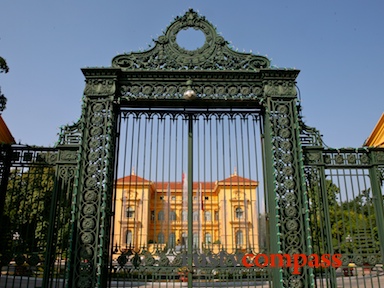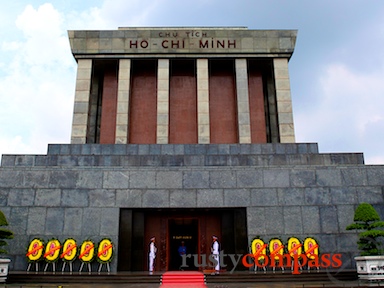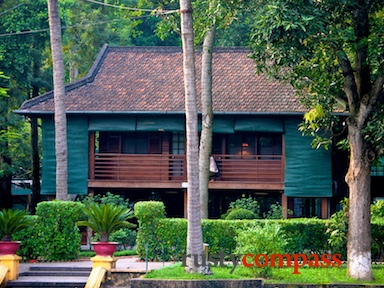
Photo: Mark BowyerFormer French Governor's Residence - now the Presidential Palace, Hanoi
Ba Dinh Square's central role in Vietnam's political life dates back to French times. In the early twentieth century, the French set about constructing a grand square for the location of Indochina's finest government buildings - including the Governor General's Residence (now the Presidential Palace). Most of the buildings remain and were taken over by the Communist Government when it assumed power in the north in 1954.
Since then, some important additions have been made to the square in honour of Uncle Ho. Built in 1957, Ho's delightfully simple house on stilts sits very well with the gentle avuncular image of the great man that is carefully cultivated in propaganda throughout the country.

Photo: Mark BowyerHo Chi Minh's Mausoleum, Hanoi
The Ho Chi Minh Museum is quirky and modern by Vietnamese standards and is the most important of the country's countless museums in the man's honour. Like the mausoleum, Soviet experts were heavily involved in its creation.
A new National Assembly building is presently under construction in the square replacing an underwhelming Soviet style structure that was recently demolished.
Ba Dinh Square is also home to one of Vietnam's most important symbols - the One Pillar Pagoda. The original pagoda was built by Emperor Ly Thai To soon after the founding of Hanoi almost 1000 years ago.

Photo: Mark BowyerHo Chi Minh's house on stilts
You can easily spend a half day visiting Ba Dinh Square. It's also a great place to catch morning Tai Chi if you're up early enough.
There’s plenty nearby as well. The streets that run off the square feature some of Hanoi's most spectacular architecture. and the West Lake and the War Museum are also short walks away.





There are no comments yet.